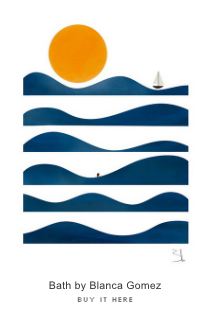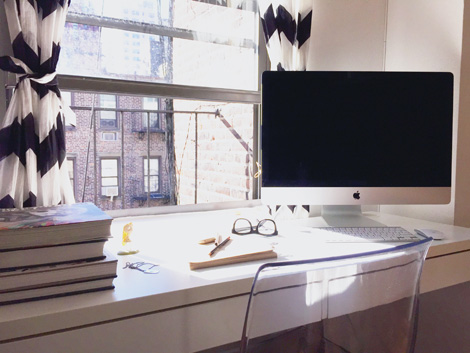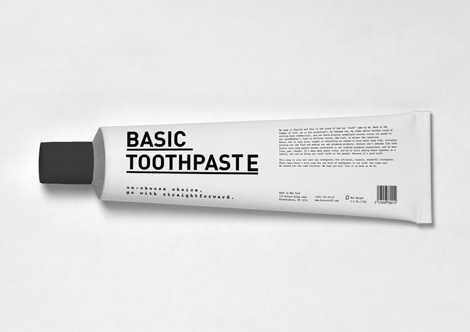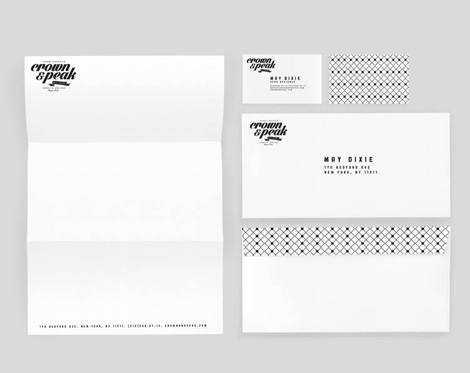Interview with Shillington School graduate Catherine Adreani
Continuing on in our interview series we chat with Catherine Adreani. A recent graduate of Shillington, she has quickly established herself as a thoughtful and capable designer with a well-polished portfolio. Today we discuss how her previous work in the film industry shaped her approach to design and what factors led to her decision to attend Shillington.
When and how did you become interested in illustration and design?
I actually used to draw a lot as a kid, and all the way through high school (where I became obsessed with calligraphy), I just never thought I could make a career out of it. I majored in Liberal Arts in College and went on to Film School after that, but the entire time I was there, I was usually more interested in the subtext that the art direction was conveying than in the main stories we were trying to tell. I ended up going heavily into editing after that, but eventually realized that I really wanted to be a designer. Being an editor is a powerful thing, but because your “canvas” is tied to the material you’re handed (and somebody else’s vision along with it, most of the time), the limited authorship was always just a little unsatisfying to me. I’m happiest when I get to create things out of nothingness.
How did you discover Shillington and what factors weighed in on your decision to attend to their program?
I had been thinking about properly pursuing design for a while, but doing another bachelor’s degree seemed silly, not to mention very inconvenient in terms of time and money. I also didn’t want to have to sit through too many of those general ed classes that pad up the curriculum (again), I wanted a program that was strictly about design and as straightforward as possible. I found Shillington online and was immediately attracted to the visual language of it, but the quality of the student work I saw was probably what sold me. I also liked the fact that they had a three month intensive option, that it was affordable, and that it was offered every quarter, which meant I could start right away as opposed to having to wait, like, a year.
On your web site it mentions you have a background in film post-production. How did your previous training in film editing influence the way you design?
Working in post made me realize how much power you have as an auteur, not just to communicate, but to create the context in which your message will be received. I think establishing a mood is so important. Every medium has different tools and ways to go about it: filmmakers have music, mise en scene, pacing; designers have color, the use of white space, type treatment… it all works. I also think it’s important to appeal to both the visceral and the intellectual components of a person’s reaction to something. I prefer to assume people are smart, and humor myself in trying to embed something funny, sarcastic or irreverent in the choices I make on a design any time I can get away with it. Even if only a few people get it, it’s worth it.
In what ways did Shillington directly or indirectly prepare you for your first design job?
The main thing is of course the fact that I came out with a portfolio. That was probably one of the main reasons for going through with the program as opposed to attempting to do things on my own. I think it’s fair to say that it’s nearly impossible to land a job in this field without a proper portfolio and a website, so right out school that’s the one thing that gets you in the door. Shillington has a very structured portfolio process (and a lot of guidance during) at the end of which I came out with a curated selection of my work, as well as the rest of the assets I needed for my job search, like a website, a resume, a business card, a leave-behind, etc. It has helpful that they set such tight deadlines for us on everything, because these turned out to be pretty realistic. I’m also really thankful for the frequent one on one chats we had with the instructors where we had to justify our design choices in ways that would hold up to an art director, because presenting to directors and clients and being assertive about it turned out to be an important part of my job.
——
We would like to thank Catherine for taking time to share with us. Her work is available online at catherineadreani.com.
——
This is the 2nd installment in a three-part interview series. See part one here.
——
Also worth viewing…
Holly Karlsson / Shillington Interview
Brad Woodard Interview
Ty Wilkins Interview
Follow us on RSS, Instagram, Pinterest, Wanelo,
——
This interview is brought to you by Shillington School. A place where students can learn from teachers who are practicing designers in a realistic studio environment.


















































